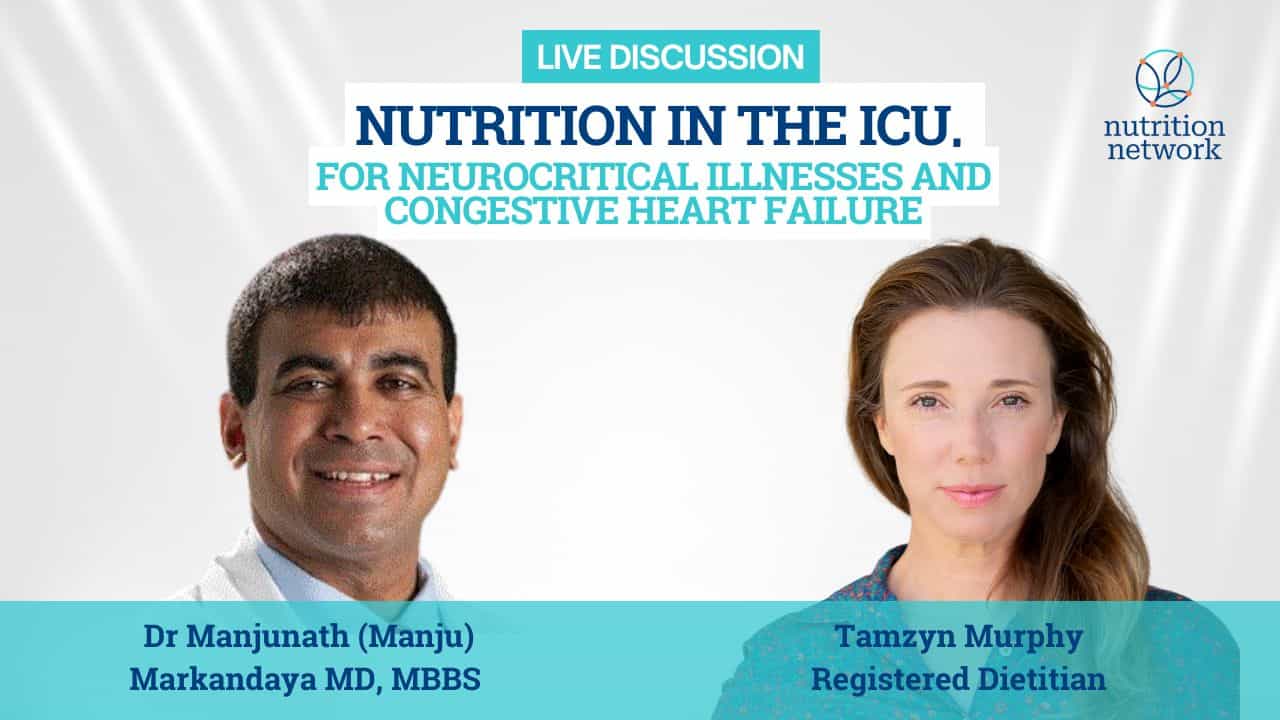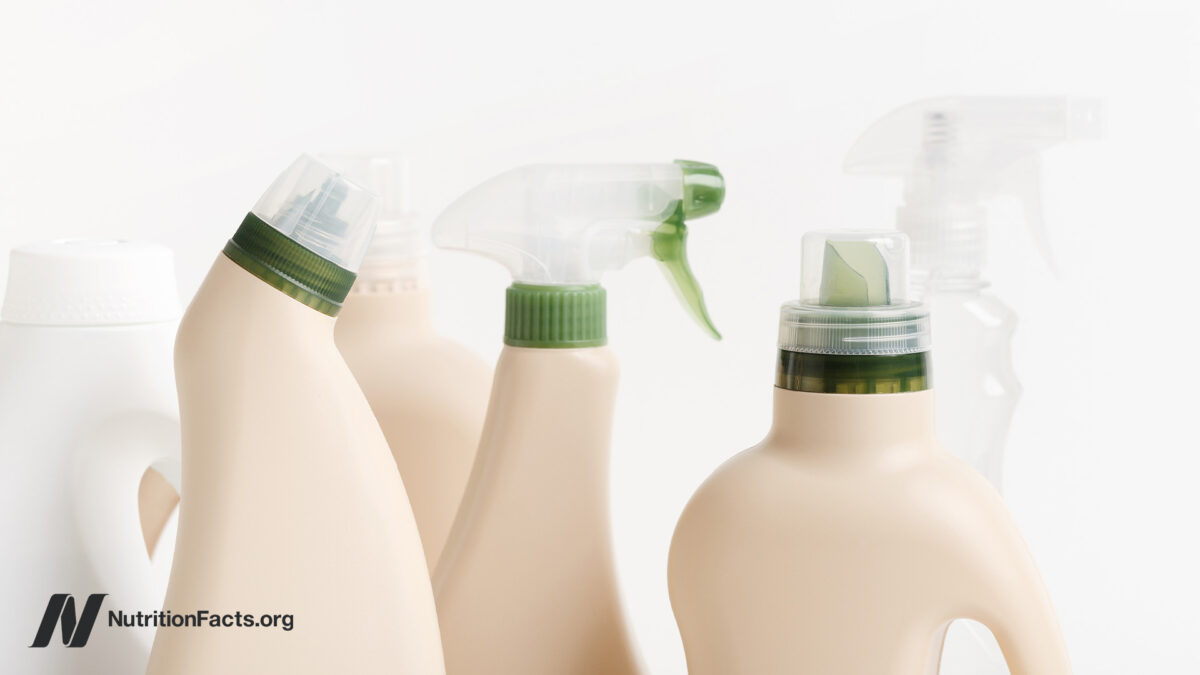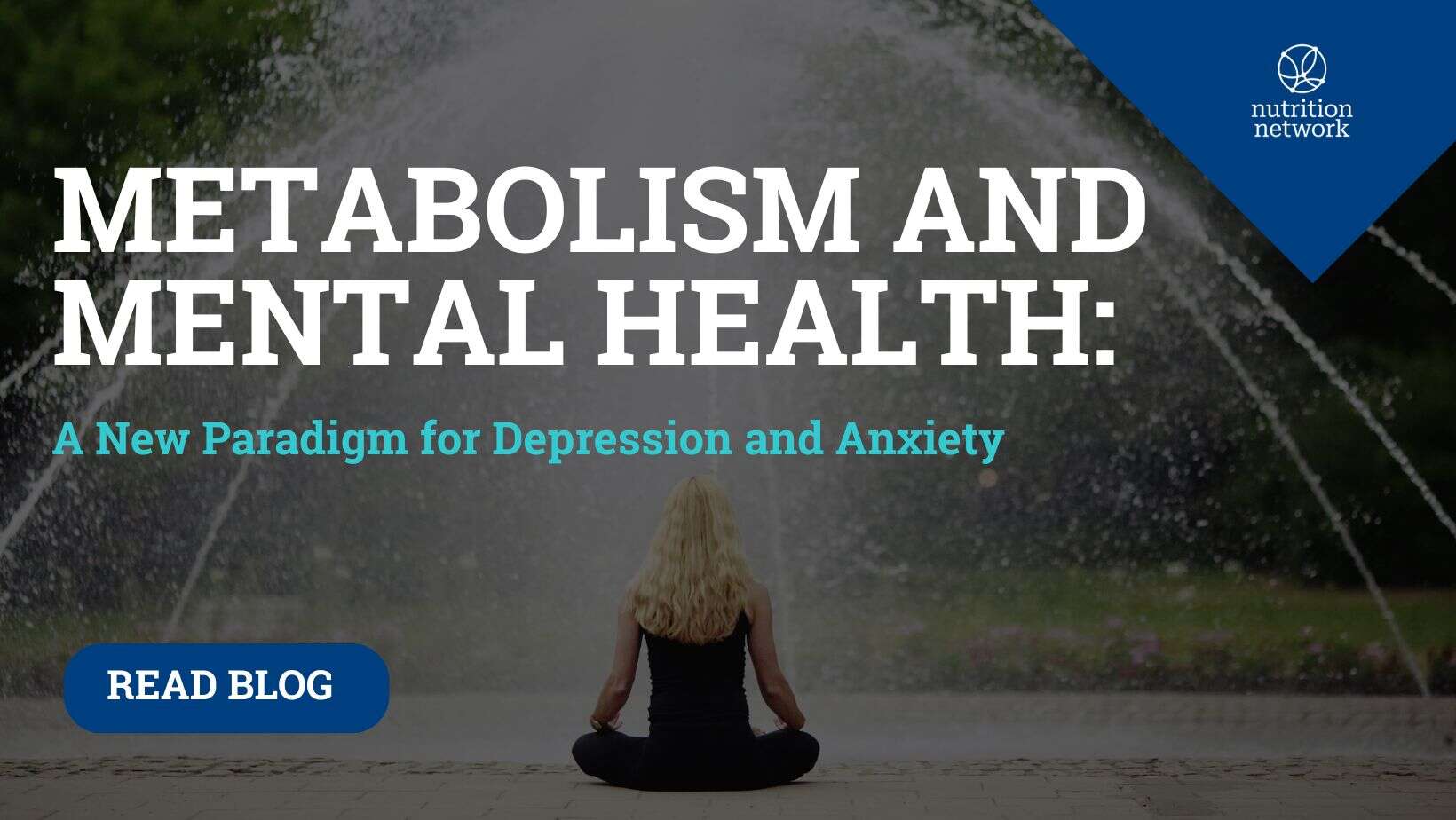Reviewed by Tamzyn Murphy RD, MSc
“Knowing what I know, I just can’t stand back and not say anything.” – Dr. Manjunath Markandaya
When we think of critical illness, nutrition is rarely top of mind. And yet, as Dr. Manjunath Markandaya a critical care neurologist based in Gainesville, Georgia explains, what we feed our sickest patients could make the difference between life, death, or recovery. In an eye-opening interview with Nutrition Network’s Tamzyn Murphy RD MSc, Dr. Markandaya (affectionately known as “Dr. Manju”) challenged outdated ICU protocols, shared extraordinary patient cases, and gave clinicians, caregivers, and families a glimpse into what nutritional therapy could look like if driven by science instead of dogma.
This is more than just a conversation about food, it’s a call to radically rethink critical care nutrition.
From Survival to Recovery: Rethinking the ICU Paradigm
Dr. Manju has spent over 20 years treating patients in neurointensive care, where he manages cases like traumatic brain injury, severe strokes, intracerebral hemorrhage, and status epilepticus. For most of his early career, nutrition wasn’t even on the radar.
“When I started… nutrition was the last thing on my mind. It didn’t matter. We didn’t think of that at all,” he confessed. “We were good at keeping people alive but we weren’t giving them good functional outcomes.”
That changed when younger patients some in their 30s, 20s, even teens began filling ICU beds. The question that began to haunt him was this:
“What can we do to improve neurological outcome… so they go back to being functional members of society?”
The answer, he discovered, lay not in more machines or medications but in fueling the brain differently.
The Brain Runs on Ketones: And We’re Starving It
The brain is a uniquely metabolically active organ and one that thrives on ketones, especially during injury. “The brain runs so well on ketones… Not only does it fuel the brain well, it triggers a whole cascade of events that allows the brain to repair and heal,” explained Dr. Manju.
Yet the typical ICU diet, whether oral or via tube feeds, couldn’t be further from supportive.
“It’s a carb-heavy, seed oil-heavy, margarine filled diet. There’s no animal fat. No attempt to promote ketosis. It’s just a continuous inflammatory slop that’s fed to you 24 hours a day.”
Even so-called “ketogenic” medical feeds are often built on refined vegetable oils like canola and sunflower oil. The irony? While attempting to induce ketosis, they simultaneously introduce pro-inflammatory fats that may worsen outcomes.
Case in Point: Guillain-Barré Syndrome and the First Real Food Carnivore Tube Feed
Faced with these limitations, Dr. Manju took matters into his own hands literally feeding a critically ill patient with a home-cooked keto-carnivore diet via a gastrostomy tube. His case report, Feasibility of a Real Food Keto-Carnivore Tube Feed in a Neurointensive Care Unit, describes a 61-year-old man with severe Guillain-Barré Syndrome, who was quadriplegic and ventilator-dependent after autoimmune nerve damage.
The standard commercial feeds offered to him were filled with corn maltodextrin, canola oil, and soy protein isolate. So Dr. Manju intervened.
“We came up with a formula using 70/30 ground beef, four to six egg yolks, full-fat Greek yogurt, and sardines. It was cooked, pureed, and brought daily by the patient’s family.”
Over time, they transitioned from four small feeds a day to two larger bolus feeds. The patient tolerated it well “no gastrointestinal issues, no new infections,” Dr. Manju reported. In fact, the patient’s kidney function improved, and his neurological recovery began.
“He was able to tolerate spontaneous breathing, wiggle his toes, shrug his shoulders… He came off the ventilator, started eating on his own, and is now back on the same diet at home.”
Why It Matters: The ICU as a Metabolic Battlefield
ICU patients are frequently hyperglycemic due to stress hormones, infections, and dextrose-laden medications. In fact, the standard blood sugar target is 140–180 mg/dL (7.8–10 mmol/L)—well into the diabetic range.
“We get penalized if we don’t keep blood sugar that high. It’s the standard,” said Dr. Manju.
This high-glucose environment is not just damaging it actively prevents ketosis. Even when clinicians attempt to induce ketosis for neurological benefit (as in refractory epilepsy), the overuse of dextrose in IV medications and feeds makes it nearly impossible to get patients into a therapeutic metabolic state.
This is where Dr. Manju’s real food strategy breaks the mold. By replacing processed carbohydrates and oils with nutrient-dense animal products, he’s creating a metabolic environment conducive to healing.
The Exogenous Ketone Workaround
When real food isn’t feasible, Dr. Manju turns to exogenous ketones specifically ketone salts for affordability and accessibility.
“We give them three to four times a day… Patients who were comatose start smiling and interacting with their families. I’ve seen it happen repeatedly.”
In one case, a woman comatose for 21 days became alert and responsive within 24 hours of ketone supplementation. “Her husband was over the moon,” he recalled.
It’s not a magic cure but it’s a powerful metabolic tool, especially in a system resistant to change.
Heart Failure and the Ketogenic Heart
Dr. Manju’s research doesn’t stop at neurology. He’s also applying ketogenic interventions to congestive heart failure (CHF) and challenging the deeply entrenched belief that fat and cholesterol cause heart disease.
“Most heart failure guidelines are still pushing low-fat, high-carb diets. But the truth is, the heart prefers fatty acids and especially ketones when it fails.”
He shared an astonishing insight: the failing heart actually signals the body to produce ketones. Some researchers are now using breath acetone levels to diagnose heart failure in non-keto patients.
Dr. Manju described several ICU patients with implanted heart pumps (LVADs) who were given exogenous ketones for neurological support—only to experience dramatic cardiac improvement.
“A few had their heart failure completely reverse. Their LVADs were removed.”
This anecdotal evidence is driving his lecture in Nutrition Network’s upcoming Cardiovascular Training, launching in August 2025. (Email support@nutrition-network.org for early bird discounts and prebookings)
Real Barriers, Real Courage
Implementing these protocols is not easy. Dr. Manju faces significant resistance from hospital nutrition departments, cardiologists, nephrologists, and administrative gatekeepers. Even when he provides supporting literature, he’s told, “This goes against the guidelines.”
“I had to go to multiple meetings, show the rationale, and even then, they wouldn’t approve it. So I talk directly to the families. If they insist and threaten legal action suddenly, people back off.”
Tamzyn summed it up best:
“You are incredibly, incredibly brave. It shouldn’t even have to be a fight to serve real food to critically ill patients—but you’re doing it, and you’re making a difference.”
What Can We Do? Practical Suggestions from Dr. Manju
If you or a loved one ever ends up in the ICU, Dr. Manju offers these critical insights:
- Ask what’s in the feed.
“Most standard tube feeds are just processed corn and soy oils. Ask for the ingredient list.” - Request elemental formulas if you can’t access real food.
“They’re not ideal, but they contain fewer inflammatory ingredients.” - Avoid continuous feeding.
“Bolus feeding gives the gut time to rest, reducing inflammation and improving recovery.” - Consider exogenous ketones.
“They’re one of the few ways to support brain metabolism in the ICU.” - Educate your healthcare team.
“Provide literature. Ask respectful questions. Push for change when you can.”
For Clinicians: Training That Transforms Practice
Dr. Manju’s approach didn’t come out of nowhere. He’s a proud graduate of the Nutrition Network Medical Certification Pathway—a rigorous, clinician-led program that empowers doctors, dietitians, and allied professionals to apply therapeutic carbohydrate restriction in clinical settings.
“It was definitely one of the most challenging courses I’ve done—and so worth it,” he shared.
If you’re ready to challenge convention and change lives like Dr. Manju, this is where to start:
👉 Nutrition Network Medical Certification Pathway
For more information on a ketogenic diet and metabolic therapies for neurological diseases sign up for Nutrition Network’s Neurology Training.
Additionally, Dr. Manju’s work is featured in Nutrition Network’s upcoming Cardiovascular Training (Launching August 2025) – email support@nutrition-network.org to pre-register or request early bird offers
Final Thoughts: From Dogma to Data-Driven Care
If there’s one message Dr. Manju wants clinicians and caregivers to take away, it’s this:
“I’d rather not take any food than get that food.”
In a world where critically ill patients are routinely fed pro-inflammatory sludge under the guise of “complete nutrition,” Dr. Manju is pioneering a return to real food, real science, and real healing.
His stories remind us: change doesn’t come from waiting—it comes from action, education, and brave professionals willing to ask the hard questions.
📢 Take Action Today
Let’s fuel recovery, not just survival.










